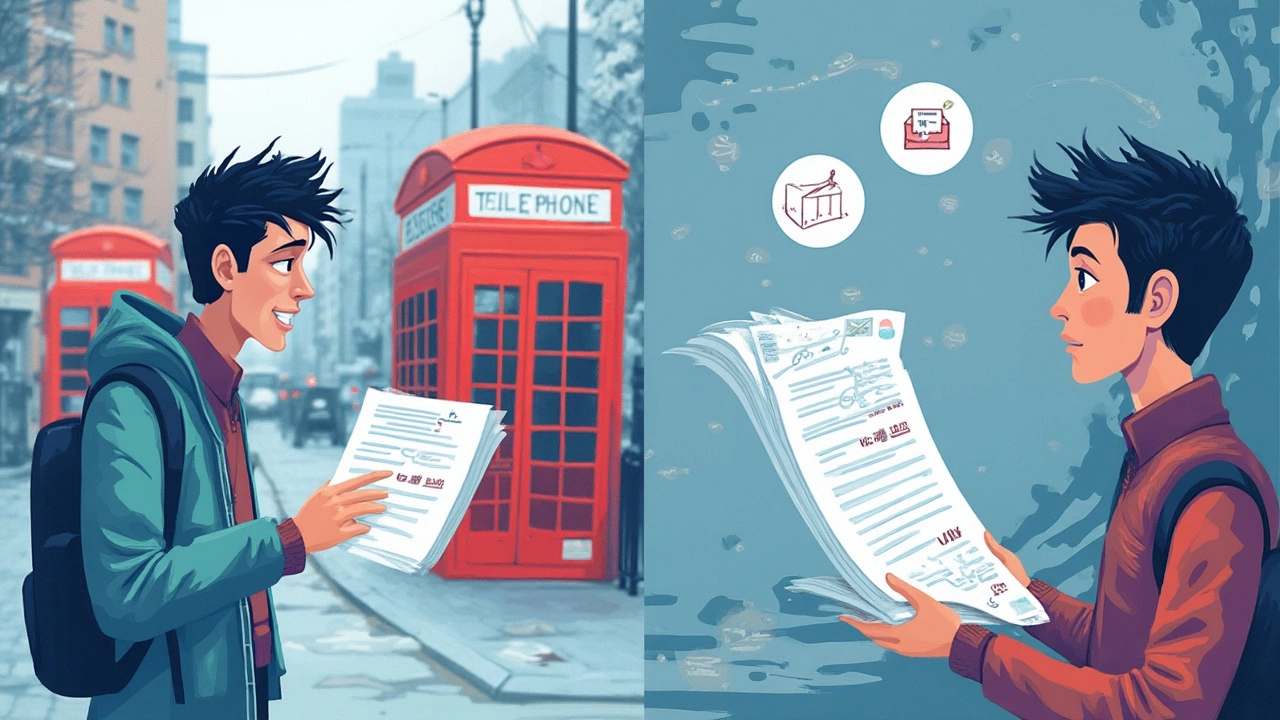If you’re scratching your head and wondering why landing a UX job seems tougher than keeping your sourdough starter alive, you’re not alone. So many folks jump into user experience thinking, “Hey, I love apps and I’m creative, this should be a breeze.” Six months and fifty job posts later, reality hits different.
There’s a reason you keep hearing about crazy competition. More people are trying to break in than ever, especially with all those shiny bootcamps promising instant results. But just because it’s crowded doesn’t mean it’s impossible. The race is more about being real with what companies want and playing to your actual strengths than following every trend.
The trick is getting clear about why some people land offers (even without a perfect portfolio) while others keep spinning their wheels. It isn’t just about pretty mockups or knowing every buzzword. It’s about nailing the basics and showing real problem-solving chops—stuff hiring managers can actually spot in a five-minute skim.
- Why UX Feels Competitive Right Now
- Skills That Matter (and Ones That Don’t)
- How Recruiters Actually Hire for UX
- Tips That Really Work (From People Getting Hired)
Why UX Feels Competitive Right Now
Truth is, the rush into UX isn’t slowing down. Back in 2015, only a handful of schools offered UX programs. Now, you can get a UX certificate in six months from pretty much anywhere, online or in-person. Tons of people are making career switches from graphic design, marketing, even teaching—all chasing those flexible tech jobs that look good on LinkedIn.
The number of entry-level applicants has doubled just since the pandemic started, according to recent LinkedIn stats. But while the pile of resumes grew, companies didn’t double their open roles. In fact, a lot of big tech companies have tightened up on hiring after their rapid growth years. Now, job openings fill up fast and hiring managers get flooded with hundreds of applications for each spot.
Bootcamps and online courses crank out a wave of new grads every term, which makes standing out even tougher. It doesn’t help that some job ads throw in a wish list of every possible design skill (UI, UX, research, prototyping, copywriting). This makes folks feel like they have to be a unicorn designer who can do it all, when most teams just want someone who knows real UX basics.
- UX jobs get targeted by people looking for better remote options, work-life balance, or a creative outlet.
- Most roles aren’t purely design—companies want you to think about business and users at the same time.
- The title “UX Designer” means different things at startups vs. big companies, so research the company before you apply.
The competition isn’t just about talent. It’s also about timing, real-world projects, and how clearly you can explain your thinking. So, if you feel like every junior job comes with wall-to-wall applicants, you’re absolutely right. The good news: once you know what’s really happening behind the scenes, your next move gets a lot clearer.
Skills That Matter (and Ones That Don’t)
Every new UX designer worries about having the right skills. You see endless lists online—some feel essential, others just trendy. But when you’re actually in the trenches, it’s way clearer which ones get you noticed for UX jobs and which you can skip (at least for now).
The basics—and yes, I mean basics—will take you further than a dozen halfway-learned tools. Companies want people who can solve real problems and communicate ideas clearly. It’s less about being a Figma wizard and more about showing you get users.
- User Research: This means knowing how to run an interview, ask non-leading questions, and actually listen. You don’t need a PhD—you need to synthesize feedback and spot patterns fast.
- Wireframing & Prototyping: Use Figma or Sketch, whatever works. Don’t obsess over details; show how screens flow and solve the problem. Most hiring managers spend under two minutes on a first portfolio scan.
- Basic Visual Design: You should understand spacing, colors, and typography. But your portfolio doesn’t need to look like a Dribbble hit. Clean and clear beat flashy, every single time.
- Communication: You have to explain your reasoning, walk people through your process, and back up choices without getting defensive. If you’re awkward on Zoom or can’t write a clear doc, it’ll sting come interview time.
Now, what’s actually overhyped? Deep dives into coding, motion graphics, or knowing six design tools inside-out. A bunch of job posts list HTML/CSS or After Effects, but in practice, those rarely tip the scale—unless the team’s super small. It’s cool to try new tools, but it won’t make or break your hiring chances.
| Skill | Does It Actually Matter? | Reason |
|---|---|---|
| User Research | Yes | Makes problem-solving more relevant |
| Wireframing/Prototyping | Yes | Shows how you map out solutions |
| Visual Design Basics | Yes | Keeps projects clear and accessible |
| Advanced Coding | No | Rarely used unless in hybrid roles |
| Motion Graphics | No | Nice-to-have, not essential |
If you want one quick checklist, focus on nailing these:
- Do real user research and synthesize insights.
- Show a few strong, clear case studies—don’t drown your portfolio with filler.
- Get comfortable with basic prototyping tools.
- Work on clear communication, especially for interviews.
Stick to these, and you won’t just be another resume in a digital pile—you’ll be in the running for the jobs that actually matter.

How Recruiters Actually Hire for UX
Let's cut through the mystery: recruiters aren’t sifting through hundreds of resumes dreaming about perfect portfolios—they’re moving quick, using set rules, and filtering candidates with tools and gut checks. On average, a recruiter spends about six seconds on a resume the first time they see it. Yep, six.
When companies post a UX job, they usually get swamped with applications. The first screen is often done by someone in HR with little knowledge about design. They're looking for easy signs: clean portfolios, real UX titles (not just "graphic designer"), and keywords matching the job post. If you don't pass that initial filter, it doesn't matter how skilled you are.
- ATS (Applicant Tracking System) software: This is what eats your resume first. It scans for titles, tools, and years of experience. If you stick with vague roles or get too fancy, the system might skip you.
- Portfolio Review: Next, if you’re lucky, your work actually gets opened. Most hiring managers skim the first project to see if you understand the basics: user research, process, and real results—instead of just pretty screens.
- Case Study Call: If you move forward, expect to explain one project start-to-finish. They want to see your problem-solving process, not just the end result. A lot of decent candidates lose their spot here by giving generic or shallow answers.
- Team Interview: This is where culture fit creeps in. They don’t just want a good designer—they want someone who can work with product, developers, or stakeholders without starting drama every sprint.
Companies also care about small things: Was your file size manageable? Did you give credit to any collaborators? Did you ask questions or just nod along?
| Stage | Percent Who Progress |
|---|---|
| Applications Received | 100% |
| Pass ATS Scan | 32% |
| Portfolio Reviewed | 19% |
| Case Study Call | 8% |
| Final Offer | 1-2% |
If you want to stand out, show outcomes, not just design deliverables. Include a short write-up on what changed for users or the business, even if it’s just a small improvement or feedback quotes. And always spell-check; recruiters toss out sloppy work faster than you might think.
Tips That Really Work (From People Getting Hired)
I’ve talked to people who landed their first UX gigs in the last year, sometimes over coffee, sometimes straight up on LinkedIn. Their feedback cuts through the noise, and if you cut-and-paste these moves, you seriously up your odds.
- UX jobs are about outcomes, not appearances. Forget endless Dribbble shots with perfect shadows. Hiring managers want to see how you solve problems. Show the process—the ugly wireframes, sketches, and your thinking along the way. One designer I know literally narrated a case study like a story, flaws and all. That got callbacks.
- Networking still beats cold applications. You don’t have to schmooze at big conferences—just chatting in online groups or reaching out to someone in a company for a short call works way better than shotgunning a hundred resumes. In a poll by UX Collective last winter, nearly 70% of junior hires got their roles through personal contacts or referrals.
- Customize every portfolio and resume. Generic portfolios get ignored, fast. Tailor your work to fit what that company actually does. If it’s a SaaS startup, highlight projects that show dashboards, onboarding flows, or data-heavy interfaces. When Emily applied for an edtech company, she rewrote her opening case study to match their style and mission—they noticed, and she got an interview.
- Don’t chase every buzzword. You don’t have to say you know everything: usability testing, UI animation, design systems, microcopy, all at once. Instead, focus on a few strong skills and show you’ve practiced them in real projects. Quality over quantity really matters here.
- Document real feedback. Show how you respond to critique, user tests, or failed iterations. One junior designer posted screenshots of negative survey results—then explained what changes they made. Recruiters love seeing you can handle tough feedback and evolve.
The folks who get hired in 2025 aren’t magic. They just stack small advantages—showing real work, connecting with real people, and never sending the same application twice. These details are what separates you from the crowd.





